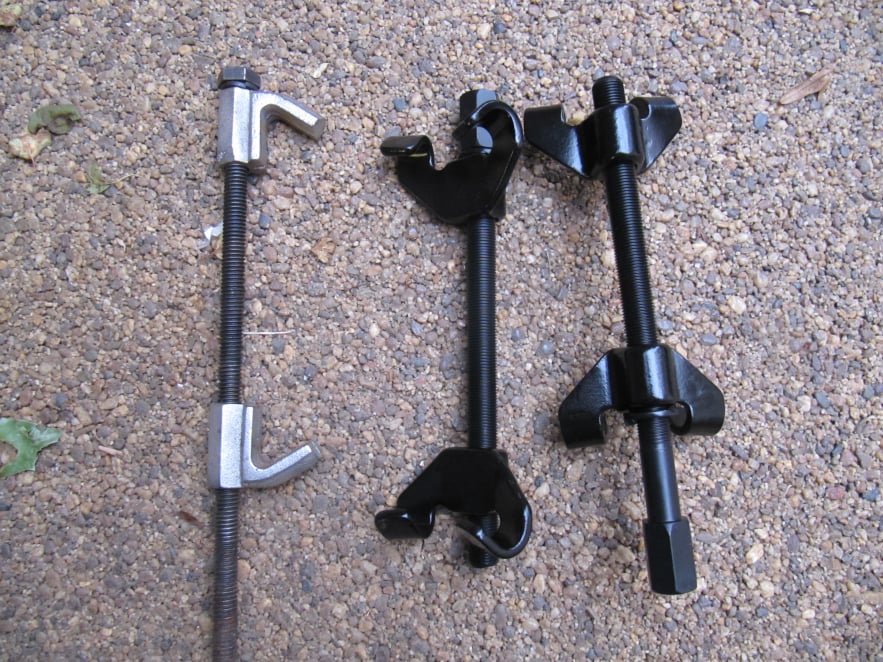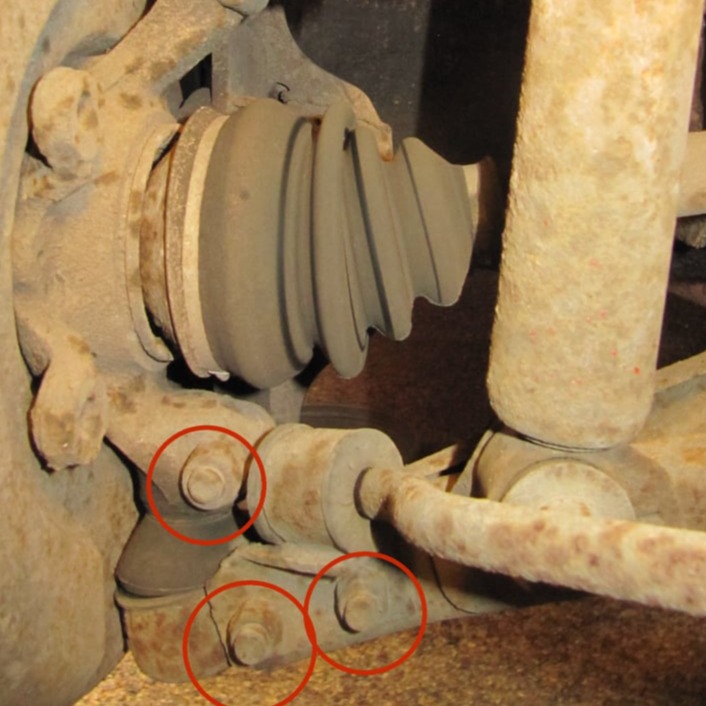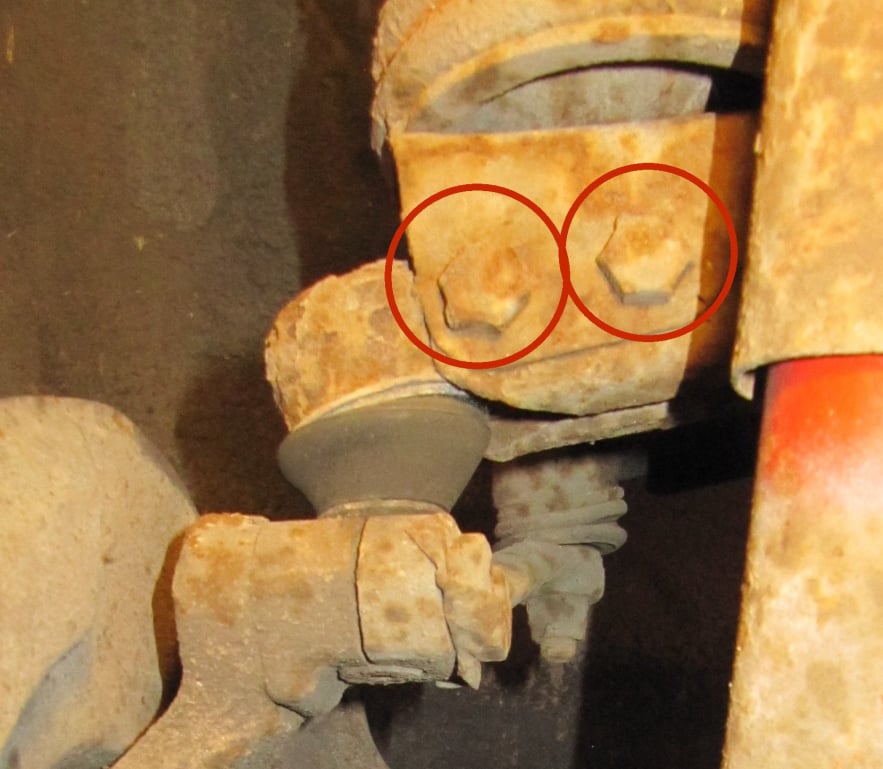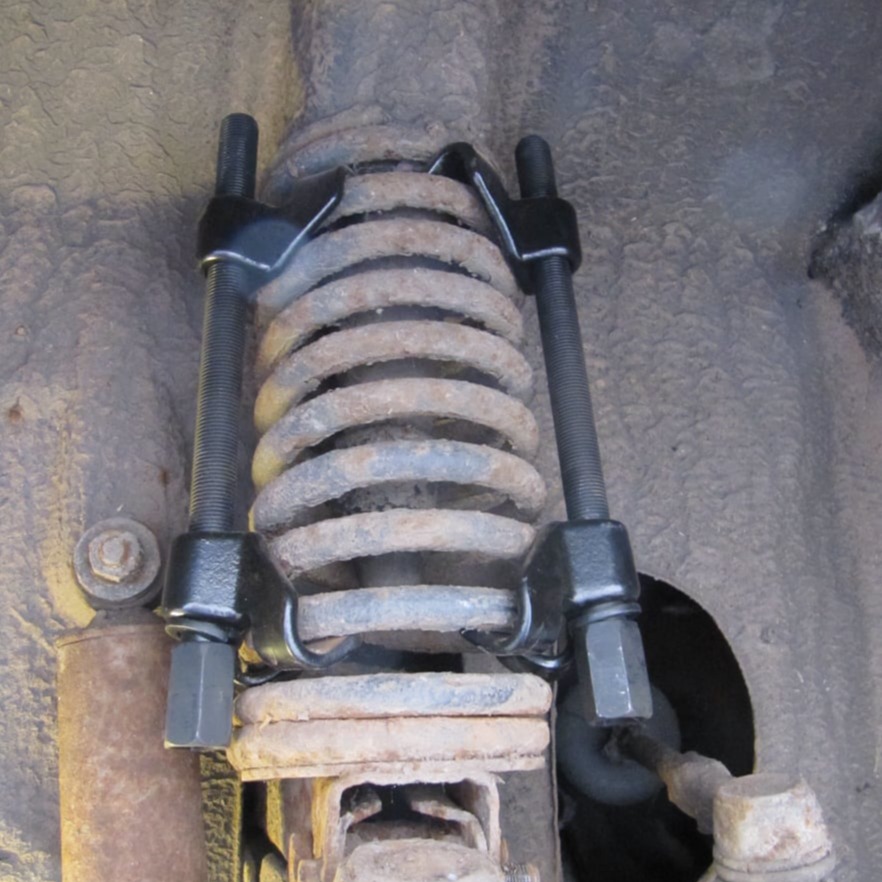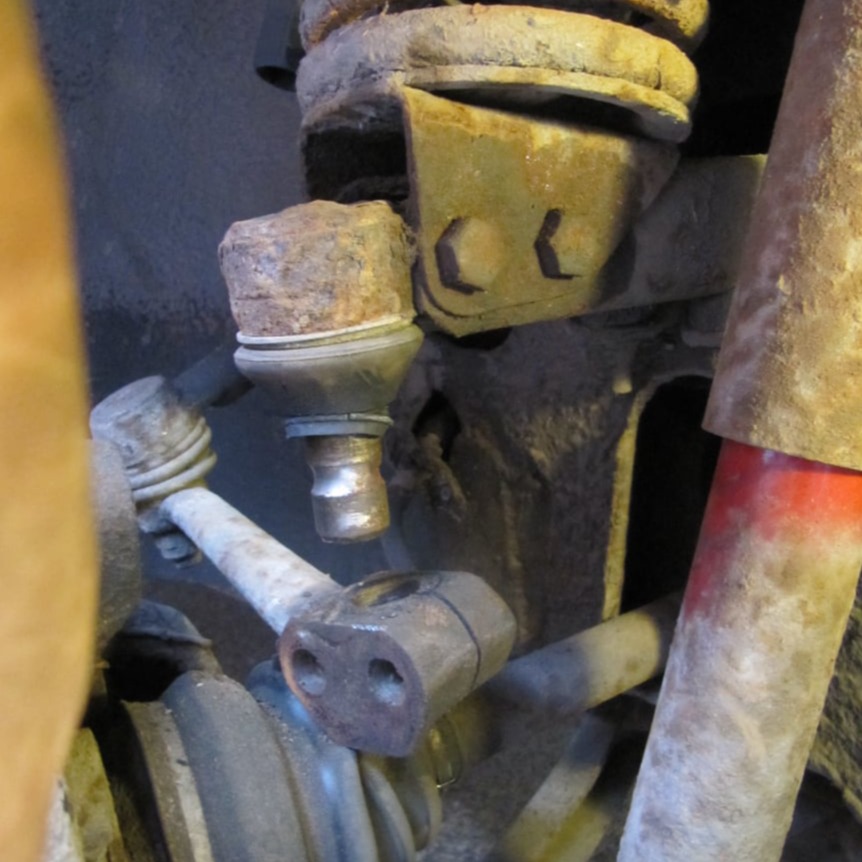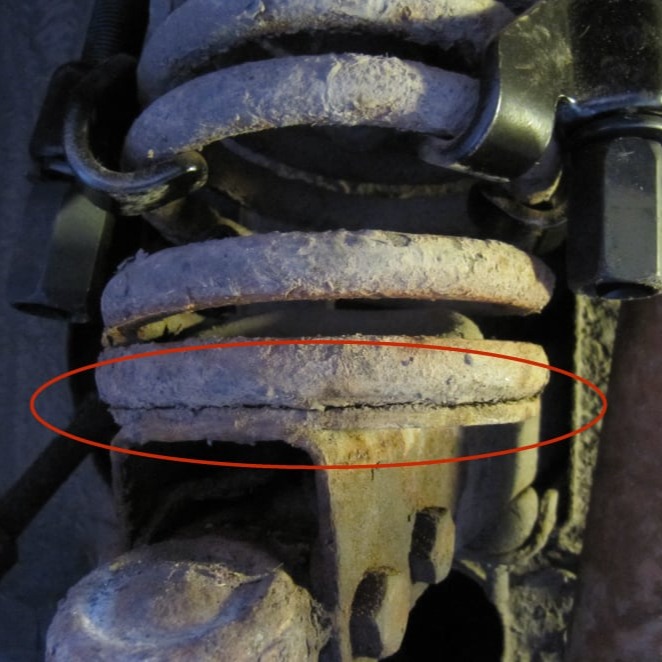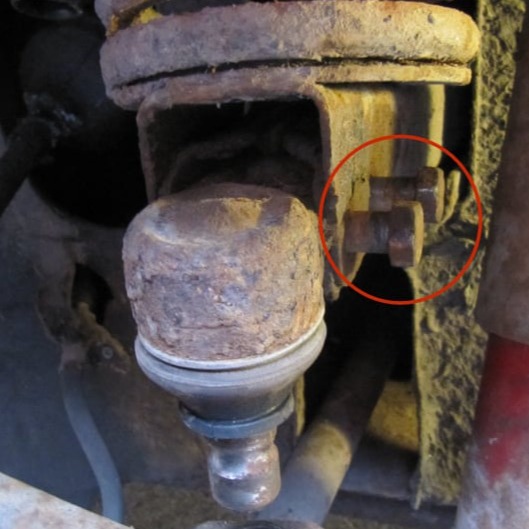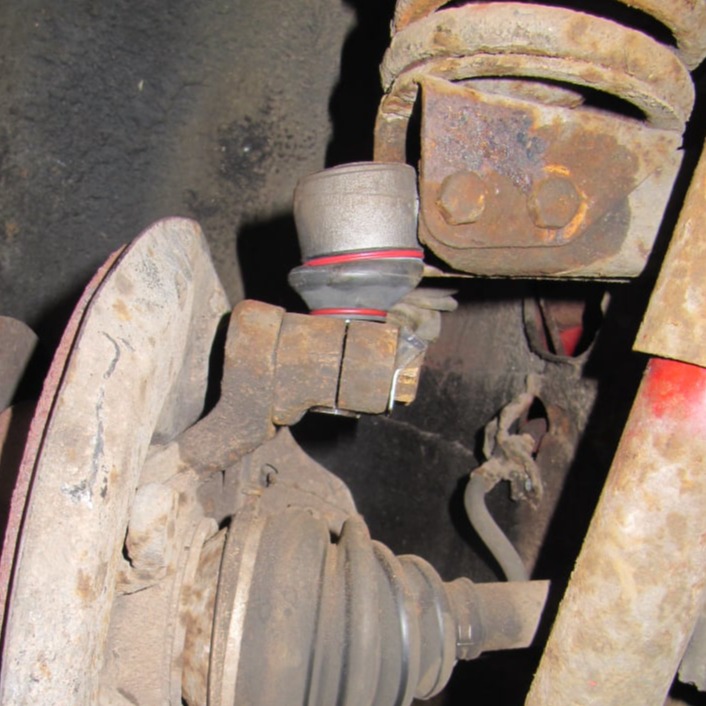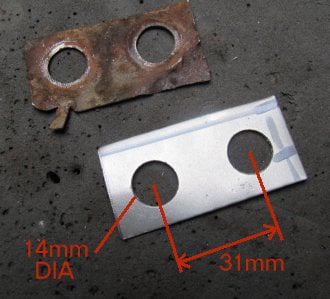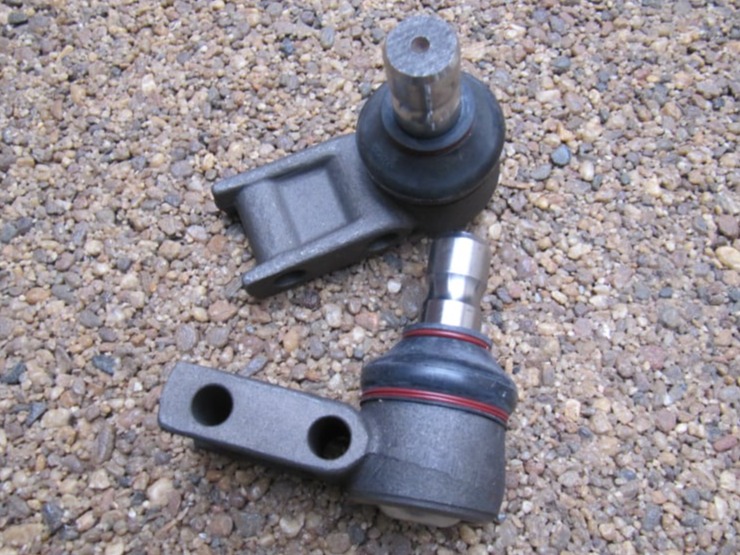
Saab V4 Front Ball Joint Replacement
This page details the replacement of the front ball joints on the Saab V4.
Be aware that removing the top ball joint also releases the main suspension spring seat, which contains a serious amount of energy, even with the suspension fully relaxed.
Proper precautions must be taken to prevent injury.
